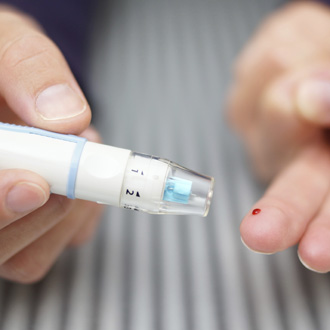Researchers identify five types of diabetes

Five distinct types of diabetes could replace the current type one or two classification, according to a new study of nearly 15,000 diabetes patients.
The paper, published in The Lancet Diabetes & Endocrinology journal, established five types of the condition which were genetically distinct, with different characteristics and associated complications.
Researchers have said that this new classification system could help to identify patients at high risk of complications, and provide guidance on the choice of treatment.
The study, which looked at patients in Sweden and Finland with adult-onset diabetes, identified three severe and two mild forms of the disease.
The research used four cohort studies, totalling 14,775 patients, and analysed six measurements used to monitor patients with diabetes, including long-term glycaemic control, insulin resistance and the presence of auto-antibodies associated with autoimmune diabetes.
They also conducted genetic analyses and compared disease progression, treatment, and the development of complications for each type.
Lead author of the study at Lund University Diabetes Centre Professor Leif Groop commented: ‘Evidence suggests that early treatment for diabetes is crucial to prevent life-shortening complications. More accurately diagnosing diabetes could give us valuable insights into how it will develop over time, allowing us to predict and treat complications before they develop.
‘Existing treatment guidelines are limited by the fact they respond to poor metabolic control when it has developed, but do not have the means to predict which patients will need intensified treatment. This study moves us towards a more clinically useful diagnosis, and represents an important step towards precision medicine in diabetes.’
The paper argued that despite the rates of diabetes increasing worldwide, with type two being the most common, few attempts had been made before this to investigate the variation within the group.
It said: ‘A refined classification could provide a powerful tool to individualise treatment regimens and identify individuals with increased risk of complications at diagnosis.’
Of the three severe forms, one group had severe insulin resistance and a higher risk of kidney disease, while another were insulin-deficient, with poor metabolic control but no auto-antibodies. The last were found to be insulin-deficient with auto-antibodies, currently known as type one or latent autoimmune diabetes in adults.
The most common type, affecting between 40% to 50% of the patients, was milder and seen in the elderly, while the other moderate type was mainly found in obese individuals.
However some limitations of the study were noted, including not being able to confirm that the five types had different causes, nor whether the patients’ type of disease changed over time. The team have also called for the findings to be confirmed in other populations and for further research to ‘test and refine’ the new groupings.
In 2016 NHS England, Public Health England and Diabetes UK teamed up to launch a new national diabetes prevention strategy, which asked GPs to screen patients and refer those deemed at-risk to the programme.
This saw 110,000 patients referred by their GP between June 2016 and December 2017, although NHS England data revealed that 55% failed to attend the programme after referral
Visit Pulse Reference for details on 140 symptoms, including easily searchable symptoms and categories, offering you a free platform to check symptoms and receive potential diagnoses during consultations.









